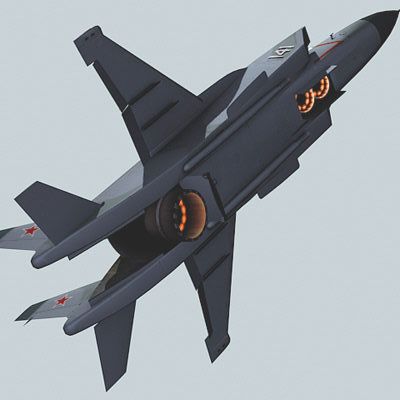Yakovlev Yak-141, nicknamed “Freestyle” was a Soviet supersonic vertical takeoff and landing (VTOL) fighter aircraft
The Yakovlev Yak-141 was a Soviet supersonic vertical takeoff and landing (VTOL) fighter aircraft that was created and developed in the late 1970s and early 1980s. In the West, it was known by the moniker “Freestyle.” The Yak-138 naval fighter aircraft, which had been in use since the early 1970s, was to be replaced by the Yak-141.
First Flight

On March 9, 1987, the Yak-141 made its first flight, and in the years that followed, it was put through a lot of testing. Many vertical takeoffs and landings as well as traditional takeoffs and landings were performed during the aircraft’s extensive testing program. A maximum climb rate of 230 meters per second (820 kilometers per hour) and a maximum turn rate of 20 degrees per second were only two of the Yak-141’s amazing performance feats during testing.
While it performed well, the Yak-141 was never put into large-scale production. The Yak-141 program was abandoned as a result of the Soviet Union’s demise in 1991 and the ensuing economic unrest in Russia. The Yak-141 was never utilized in combat and just five prototypes were ever made.
Early Design
The Yakovlev Design Bureau, led by Alexander Sergeyevich Yakovlev, a well-known Soviet aircraft designer who had worked on the Yak-9 and Yak-3 fighter aircraft during World War II, created the Yak-141. The Yak-141 was a special aircraft because it could do both short takeoff and vertical landings (STOVL) and conventional takeoff and landings (CTOL), making it a flexible fighter that could take off and land at both large, established airfields and tiny, improvised landing sites.
A unique design created especially for the Yak-141 lift fan system was employed on this aircraft. The device was a large fan behind the cockpit that was powered by a gas turbine engine. The aeroplane was raised off the ground or a ship deck using the substantial lift that the fan created. Moreover, the Yak-141 employed two nozzles, one on each side of the cockpit, to produce thrust in both the forward and vertical orientations.
Engine
One Rybinsk RD-41 engine, which produced 16,000 pounds of thrust in VTOL mode and 28,000 pounds of thrust in CTOL mode, powered the Yak-141. The engine had a revolving nozzle that directed the thrust rearward for horizontal flight and downward for vertical lift during takeoff and landing. Moreover, the Yak-141 had a lift fan in the nose that gave the aircraft more lift during vertical takeoff and landing.
Maximum Speed
The Yak-141 had a range of 1,300 kilometers and a top speed of Mach 1.8. (810 miles). It could carry a range of air-to-air and air-to-ground missiles and bombs and was equipped with a single 30mm gun for defense. Radar and sophisticated avionics were also included in the Yak-141, including a helmet-mounted display (HMD) system that let the pilot aim weapons by gazing at the target.
Yet, the Yak-141’s influence can still be seen today in the British Harrier II and the US F-35B Lightning II, both of which are STOVL fighters. The Yak-141’s engine and lift fan system are both used by the Harrier II and the F-35B, along with many other related design elements. The Yak-141 was also used as a testbed for the development of vertical takeoff and landing technology, which has subsequently been used in a number of other aircraft, such as drones and unmanned aerial vehicles (UAVs).
The Yakovlev Yak-141 was a magnificent aircraft that, during the Cold War, showed off the Soviet Union’s technological might. The Yak-141 was a distinctive aircraft that could take off and land vertically as well as conventionally, making it a flexible fighter that could take off from and land at both large, established airfields and tiny, improvised landing sites. Although never put into full-scale production, the Yak-141 had a significant influence on the advancement of STOVL technology and served as the model for a new generation of STOVL fighter aircraft.








